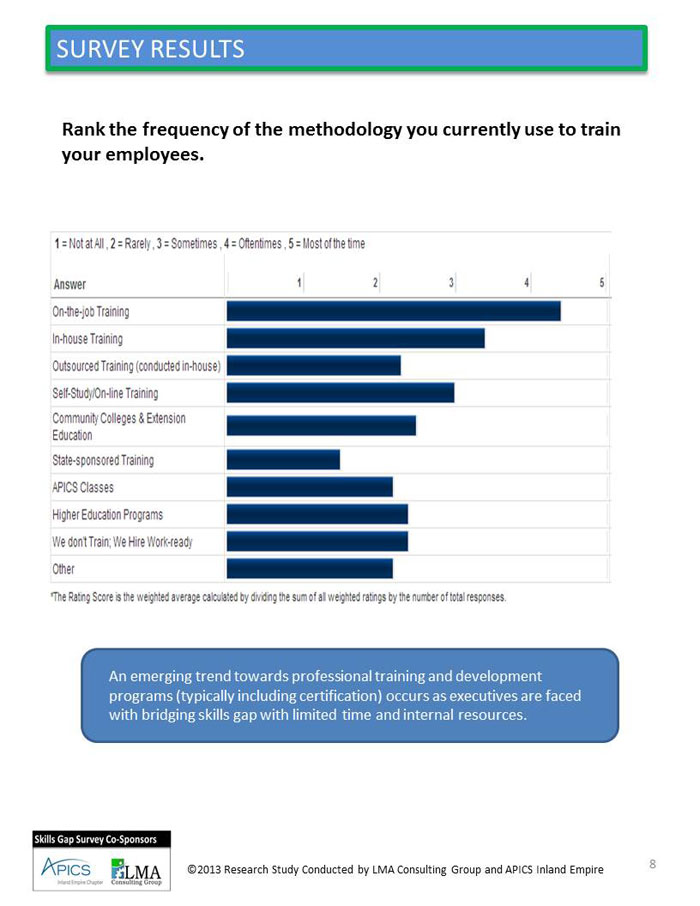On-the-job training is rarely enough! In a survey conducted by my firm, LMA Consulting Group Inc. in conjunction with the APICS-Inland Empire chapter, it was found that on-the-job training is the most frequent methodology used to train workers yet 87% of manufacturers and distributors surveyed are experiencing a skills gap. What else can be done?
In my former career as a VP of Operations for a mid-market manufacturer, we frequently utilized on-the-job training as it seems to be low-cost and quick to implement; however, it is not as it appears. In my experience in working with multiple clients across many industries and geographies, I’ve found that the majority of on-the-job training can loosely be termed training. It’s easy to fall into that trap as it seems the easiest way to get employees up-to-speed with existing resources; however, no one has extra time to train properly and it is rarely planned effectively. I’ve fallen into that trap too so I know it’s easy to do; however, it is unacceptable – you spend more time, resources and money “trying to save money” than if you invested wisely.
Instead, what I’ve found to be effective is a smart combination of a pre-planned on-the-job training and development programs for those items which need to be integrated into the process with other education options. To determine which training and education options to use, it is vital to take a step back and determine which types of skills and behaviors need to be developed for each employee. Only then can the “right” comprehensive program be established. Some folks need technical concept training – in these cases, APICS classes or community college technical training can be a great value. However, they’d be useless for someone who knows what to do but who is unable to communicate it to his/her boss. In that case, a communications class might be in order or a mentor type process could be preferred which could be something like Toastmasters.
Partnering with potential training partners is a smart move in today’s new normal business environment. It would be rare for every situation to require one type of training program – or every employee to learn in the same way. Thus, it makes sense to build relationships with several training options including groups such as APICS, community colleges and extended education partners, higher education partners (they are branching out more and more with projects to partner with the community), self-study programs etc.
The complete Manufacturing and Distribution Skills Gap report will be available in December. To automatically receive the free report when it is available, register here.
Employers that offer training and education are more likely to retain top employees – will you jump on board or be left in the dust?



